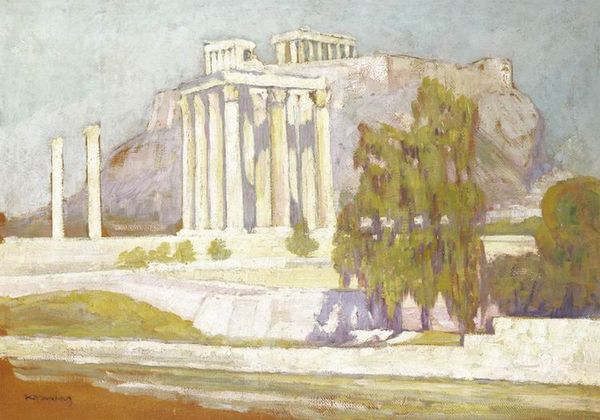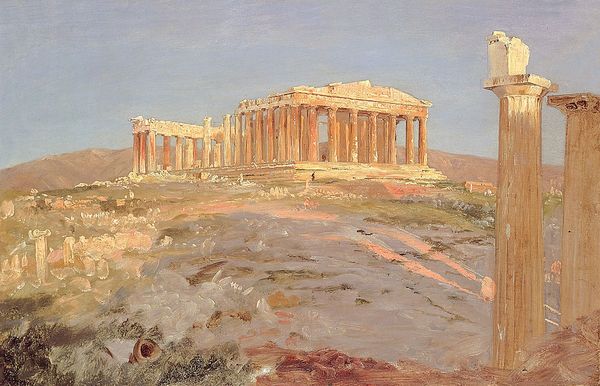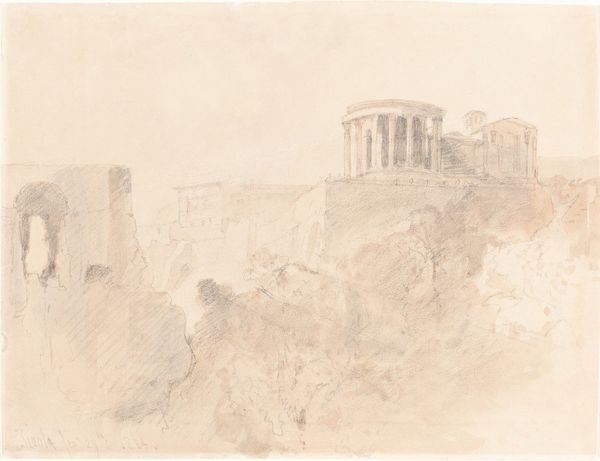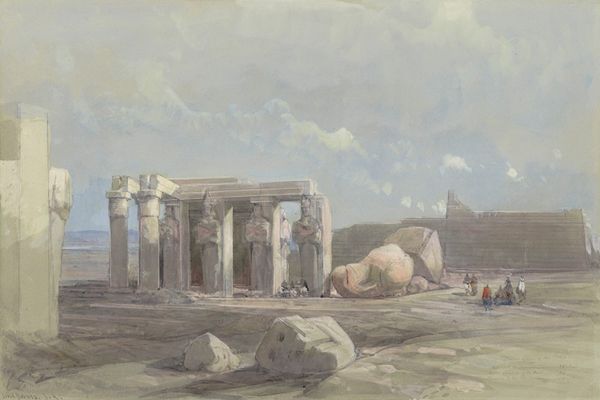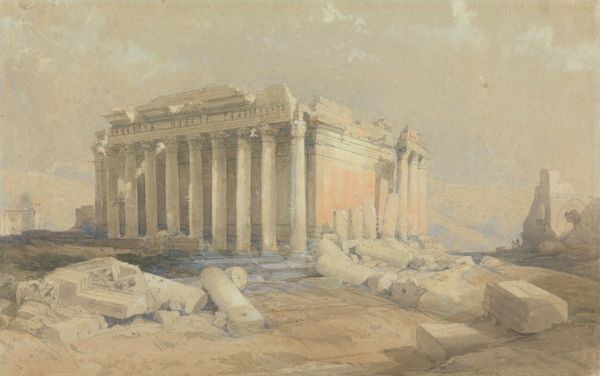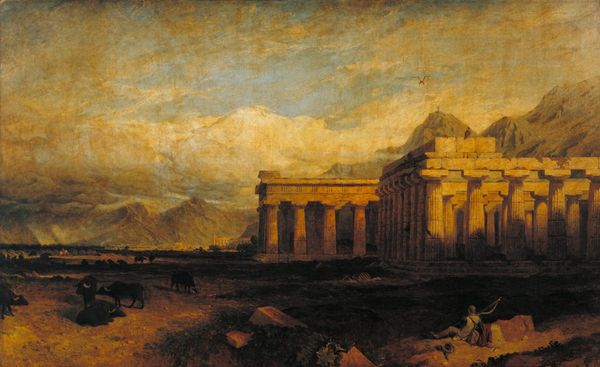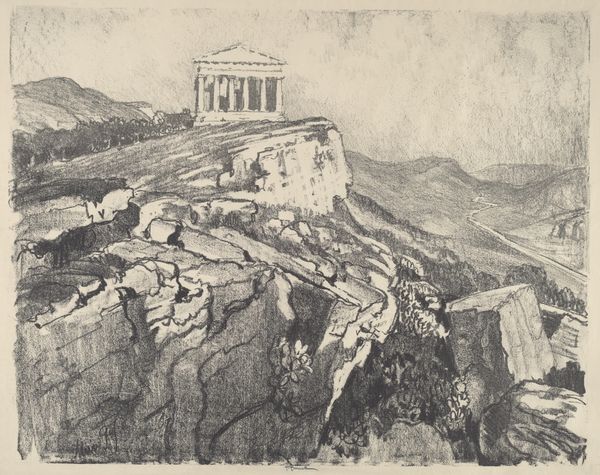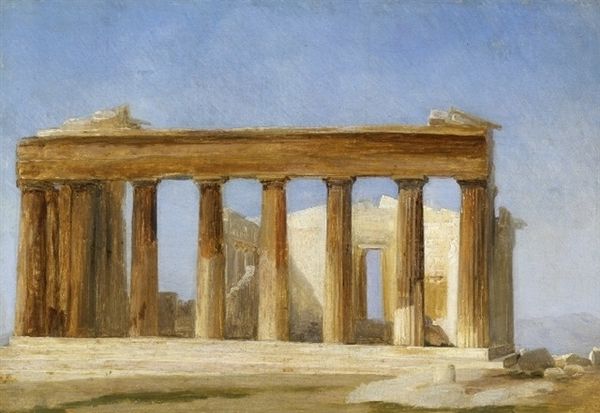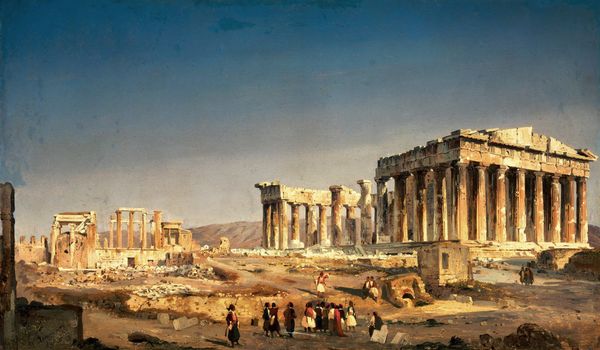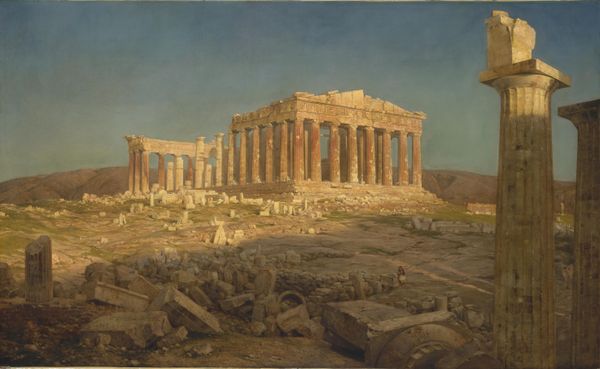
View of the Acropolis of Athens 1849
0:00
0:00
jeanaugustedominiqueingres
Montauban Cathedral, Montauban, France
painting, oil-paint
#
neoclacissism
#
painting
#
oil-paint
#
greek-and-roman-art
#
landscape
#
handmade artwork painting
#
oil painting
#
cityscape
#
academic-art
#
watercolor
#
building
Copyright: Public domain
Editor: Here we have Jean-Auguste-Dominique Ingres’ “View of the Acropolis of Athens,” painted in 1849. It’s rendered in oil, and looking at it, I immediately feel a sense of classical stillness, even reverence, despite the ruins. What symbols or hidden narratives do you think Ingres wove into this landscape? Curator: The Acropolis itself is a potent symbol. Ingres painted it during a time when Europe was actively re-engaging with its classical past. What feelings do these architectural remnants evoke in you? Editor: A mix of awe and loss, perhaps? It's beautiful, but the deterioration is evident. Curator: Exactly. Ruins speak to the passage of time, the transience of empires, but also the enduring power of cultural memory. Look at the Parthenon: even incomplete, it retains its iconic form, a symbol of democracy, philosophy, and art that still resonates. Does the way Ingres composed the scene, bathed in soft light, suggest anything to you? Editor: It feels idealized, maybe? A bit romanticized, rather than a harsh depiction of reality? Curator: Indeed. The choice to present the scene bathed in warm light emphasizes a connection to the Golden Age. Ingres might be suggesting a cultural inheritance, a lineage to which 19th-century Europe saw itself as heir. Consider too that classical architecture was often used as a symbol of reasoned order. Are you reminded of this concept in Ingres's artwork? Editor: Definitely in the perfect form of the Parthenon and, at the same time, of the inevitability of time destroying material form. Thanks, that really puts the painting in perspective! Curator: It’s a powerful example of how a landscape can function as a repository of collective memory. The painting also embodies humanity's complex relationship with the past.
Comments
No comments
Be the first to comment and join the conversation on the ultimate creative platform.
